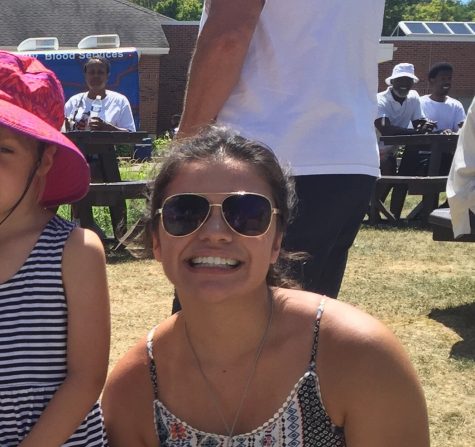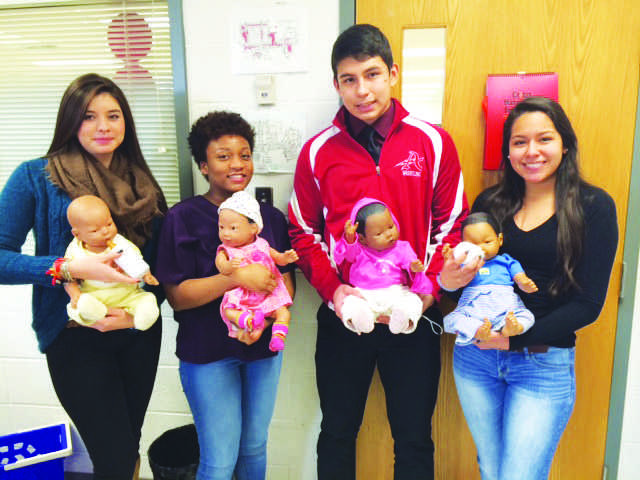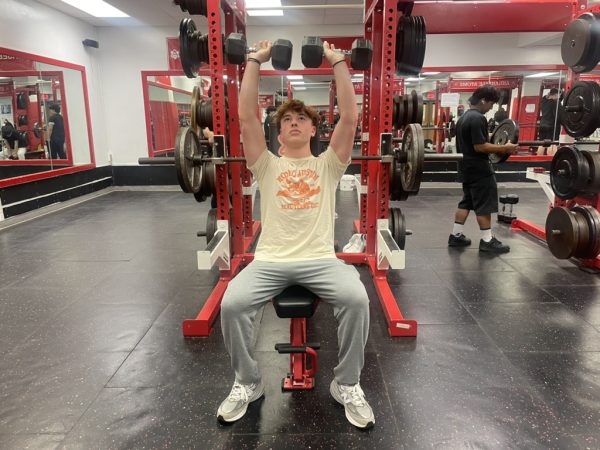Students learn how to raise babies
Robin Griffin’s students holding RealCare babies.
It needs a lot of care and attention. You need to change its diapers and feed it bottles. It coos when happy, cries when it needs something and cries when its needs are not met! It seems like the answer to this riddle is a baby, but thankfuly you can take out the batteries. This type of baby is called a RealCare baby. They look like real babies and are the same size as real babies, the only difference is that they’re plastic.
The RealCare babies look like your average baby doll from a toy store, but their purpose is so much more than just to be played with.
With parent permission, each student has the opportunity to take a RealCare baby home for the weekend.
“I am taking the RealCare baby home next weekend. I’m kind of nervous but I’m sure I’ll do fine because I have past experience in childcare of newborns,” sophomore Caitlin Hall said.
The RealCare babies are programmed to turn on Friday at 3 p.m. and turn off Monday at 5 a.m. Students must care for the baby individually because each RealCare baby has a computerized sensor that responds to a sensor the student must wear on their wrist.
Child development is taught by Robin Griffin at AHS. Child development is the class where students are given the RealCare babies.
Griffin teaches students about pregnancy, childbirth and parenting. Students also learn how to properly care for the baby simulator before they can take it home.
When the students take the RealCare babies home, they are given a diaper bag with a bottle and diapers in it. The bottles and diapers have sensors in them, which respond to the baby and records feeding and diaper changes. The computer gathers all the care information that takes place over the weekend.
The RealCare babies are computerized so on Monday Griffin gets a print out of how the baby was cared for over the weekend. Everything from missed feeding to poor head support is recorded. This is how she grades the students on taking care of the RealCare babies.
The RealCare babies are programmed with actual baby sounds. They cry when they need something and they coo when they’re happy just like real babies.
“The best part about having the RealCare baby was taking it to the mall with my friends and having people look at me but then noticing it was a fake baby!” senior Sandy Reyes said.
Some RealCare babies are harder to take care of than others. Students can ask to have the baby programmed on Easy, Medium or Hard, which decides the amount of care the baby will need over the weekend.
“My students love taking the baby home!” Griffin said. “They are always nervous, but they are prepared and enjoy the challenge. However, they are always very happy to return the baby on Monday.”
Taking care of a RealCare baby is a rare and amazing opportunity for teens.
Having an actual real baby is difficult for everybody, not just teens, so this experience lets them know how difficult raising a child will be no matter how old they are.
“I love teaching this course because not only is it fun, it’s life changing!” Griffin said.
The child development class teaches life lessons and skills that the students will use and take with them after high school.

Senior Alaina Garay is currently one of the Photo Editors for the A-Blast. This is her fourth year working on staff and her third year as an editor. She...








